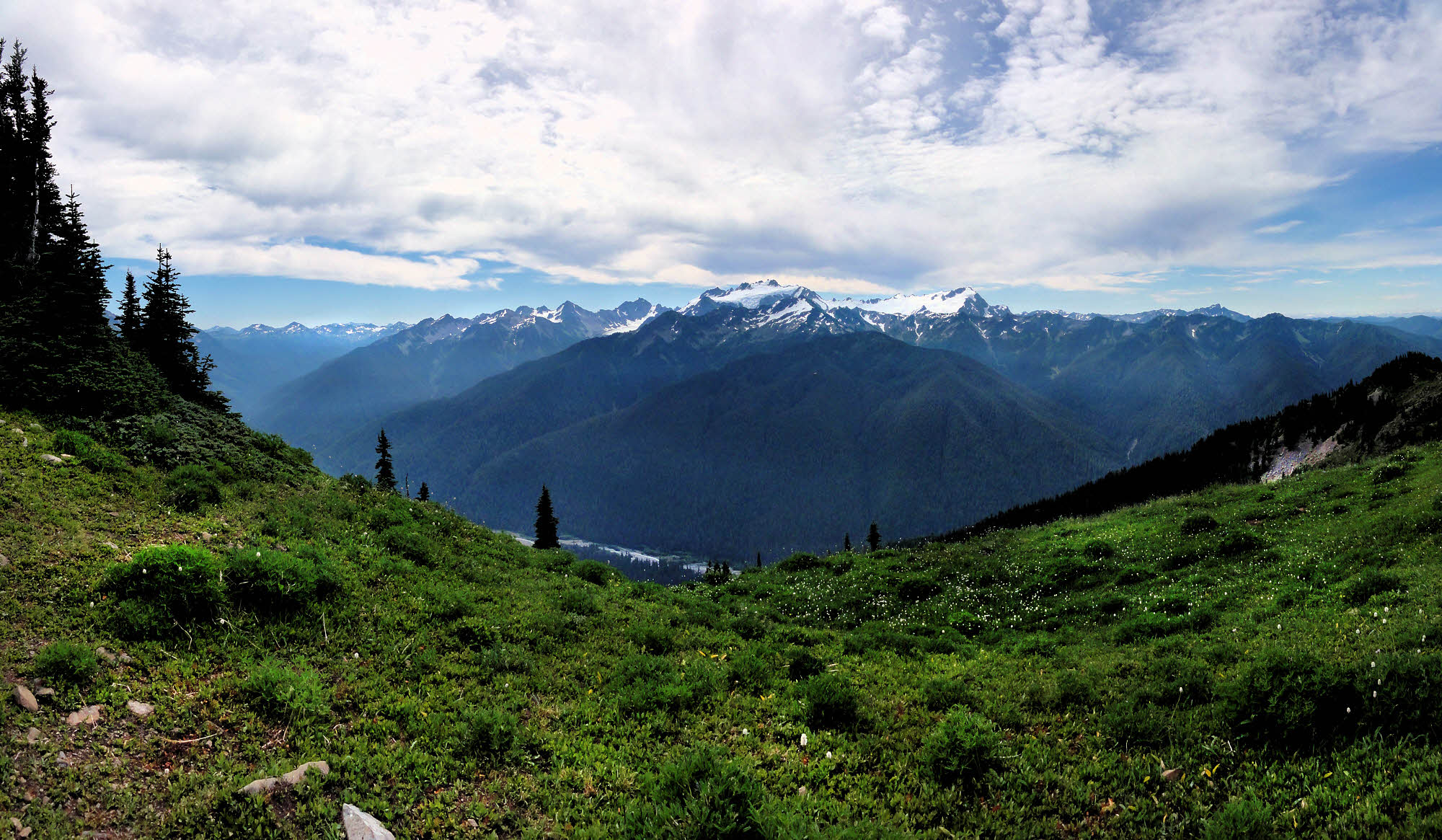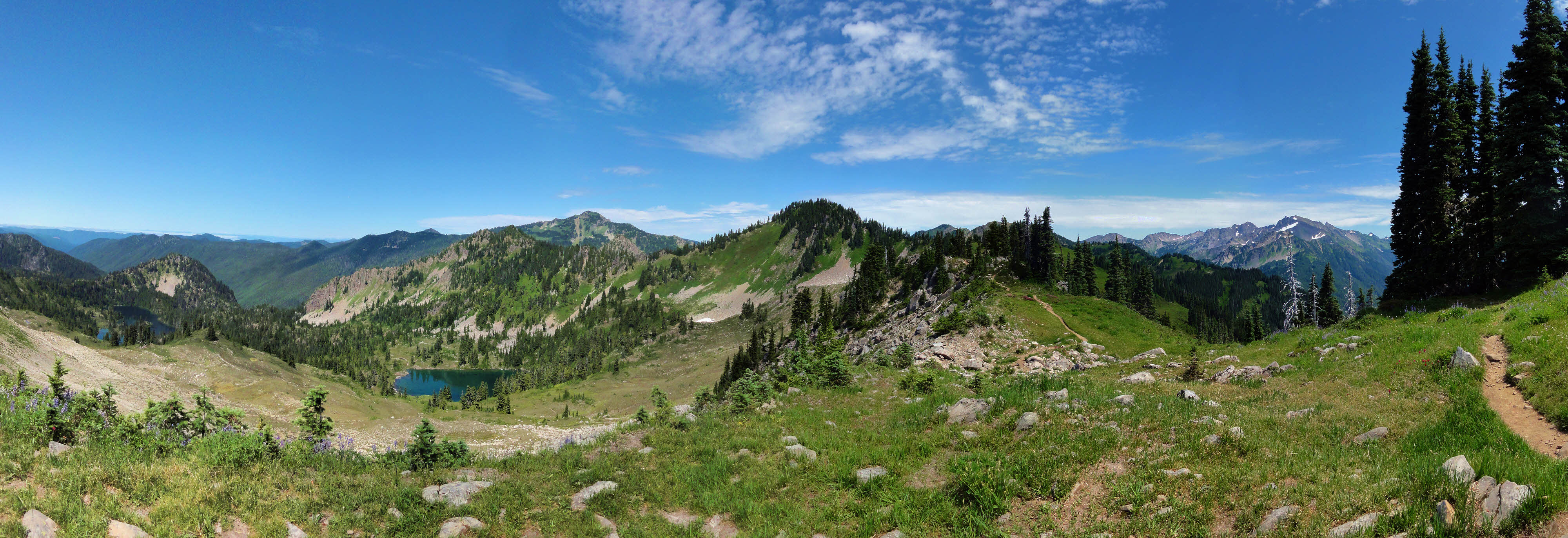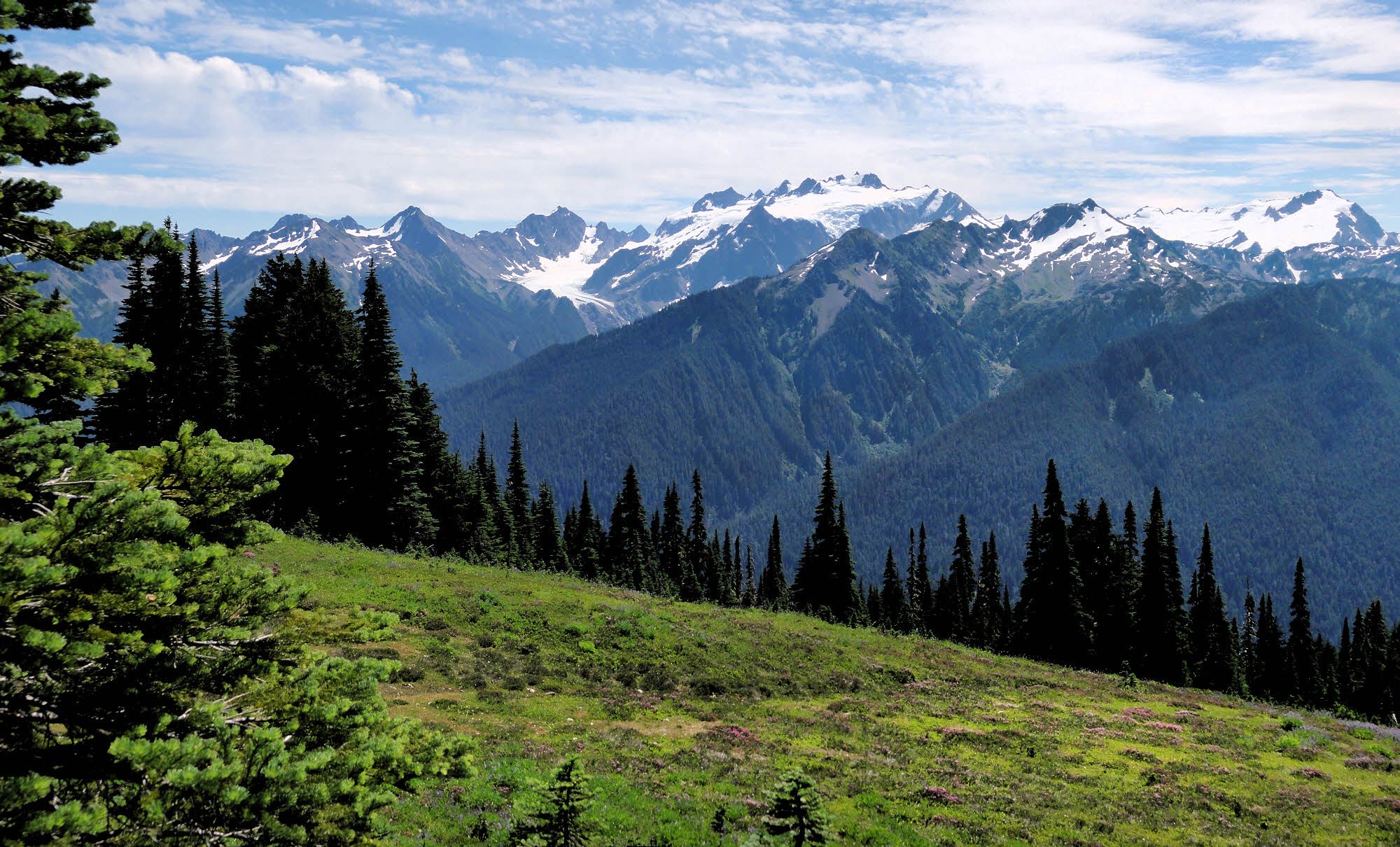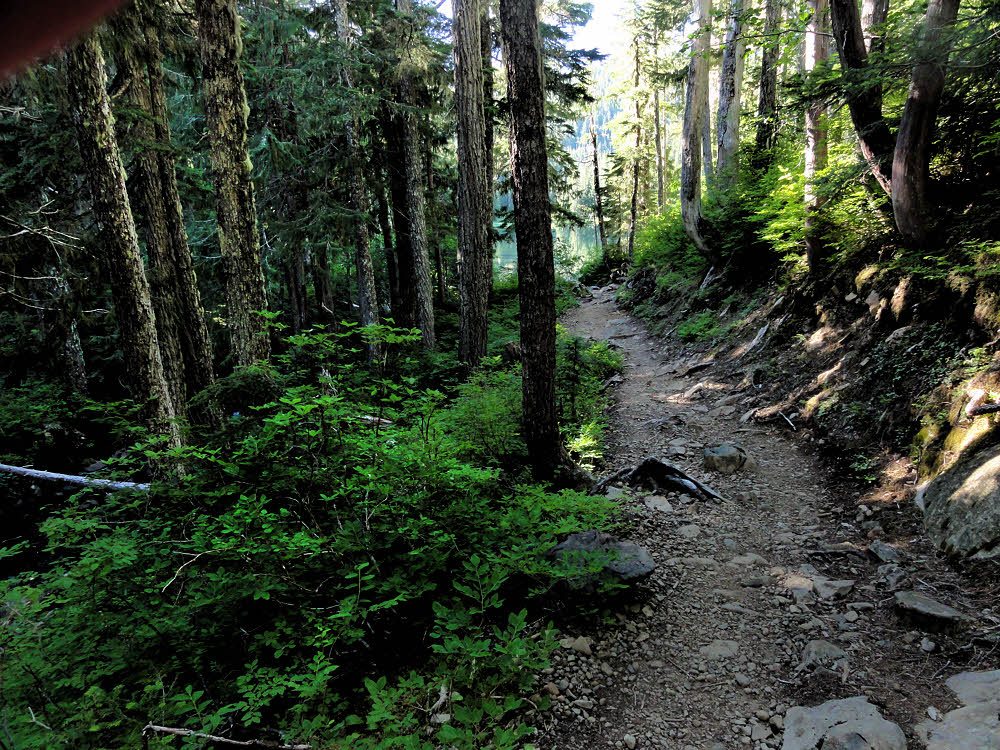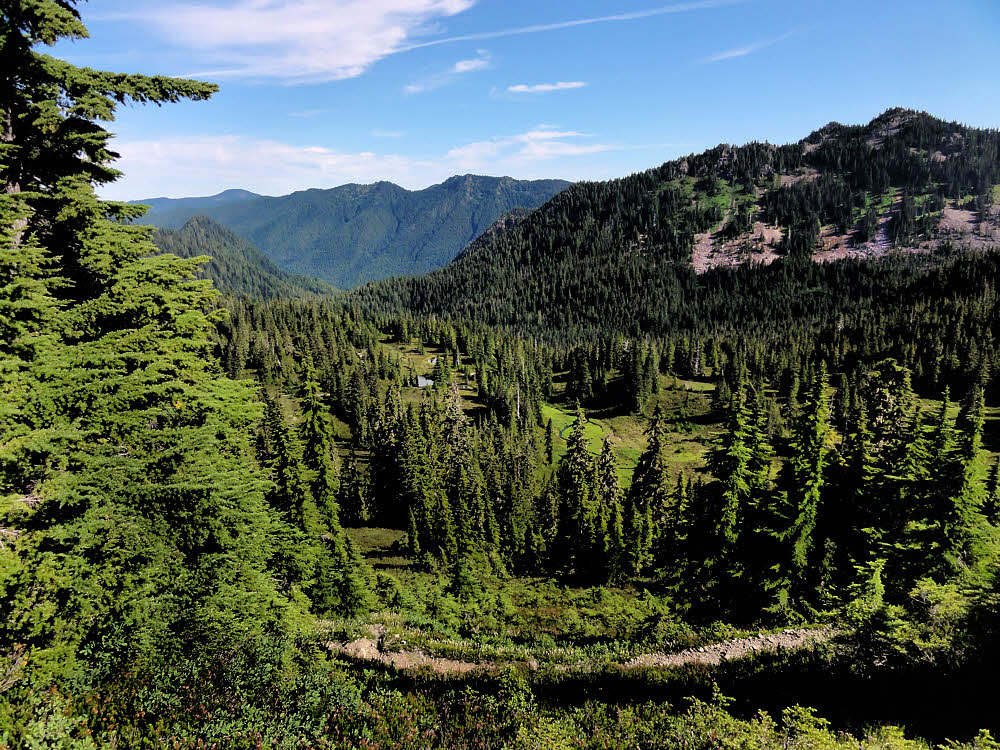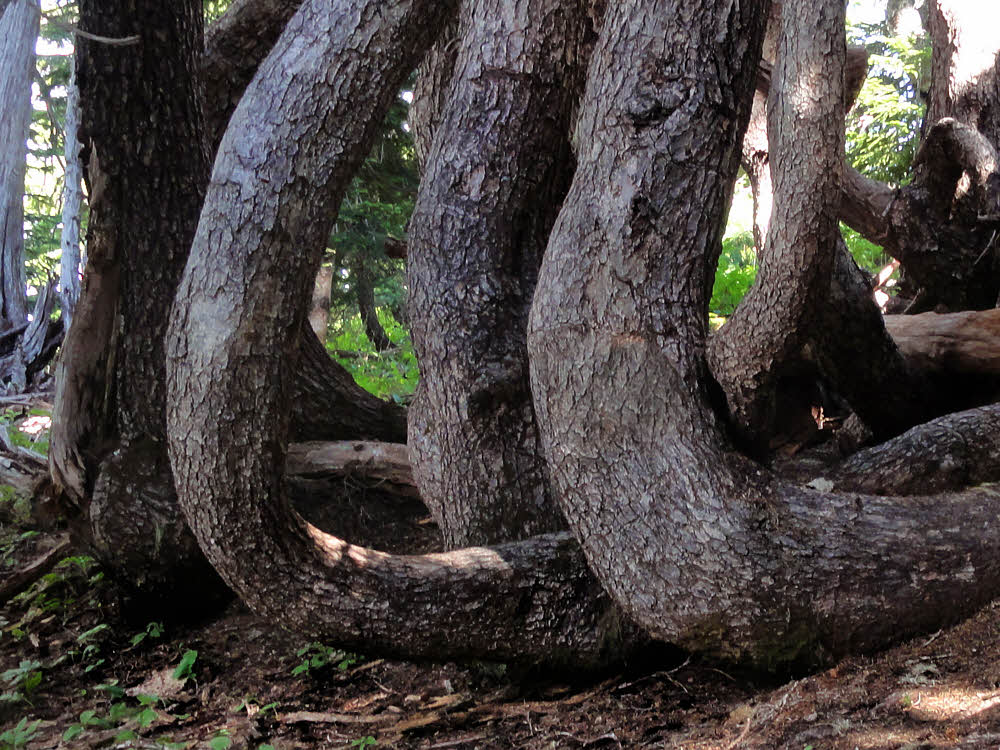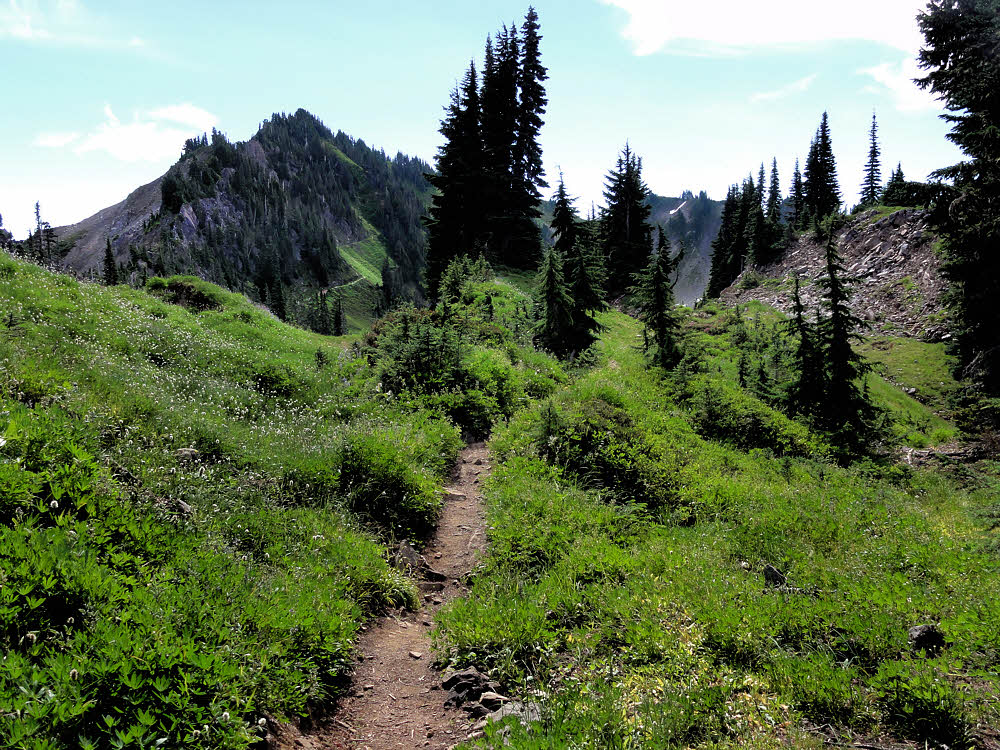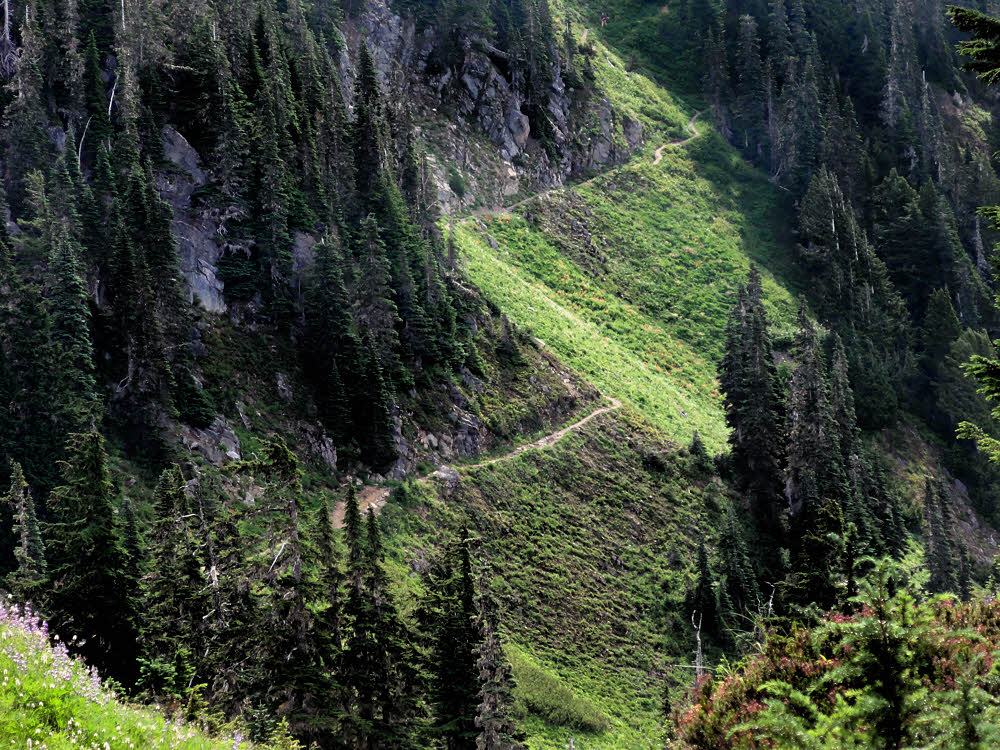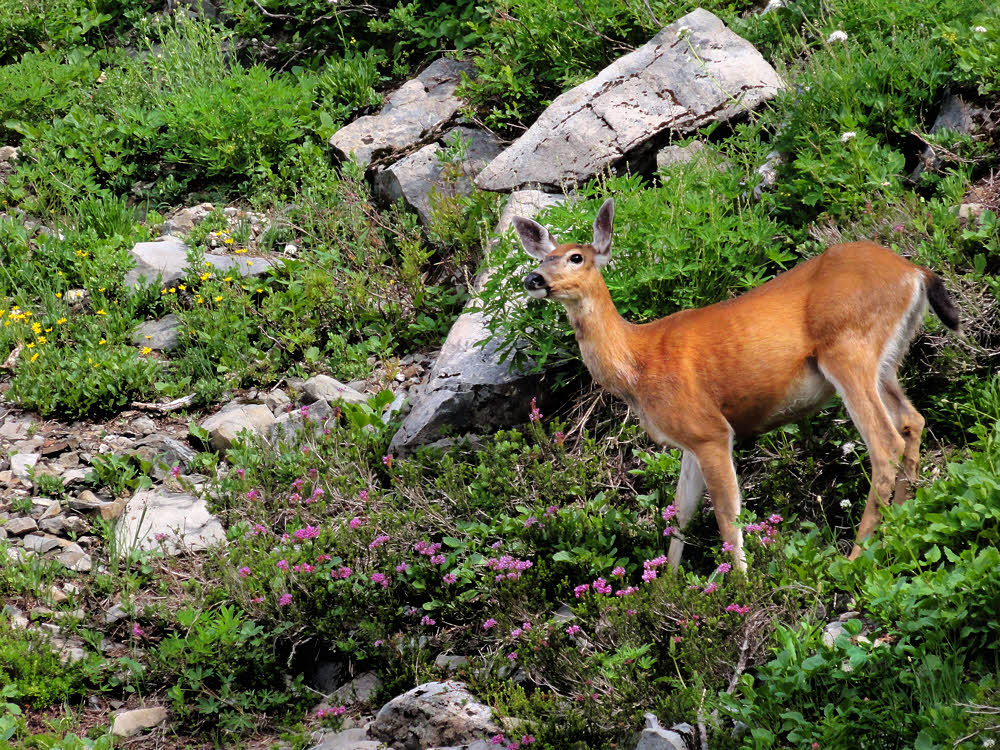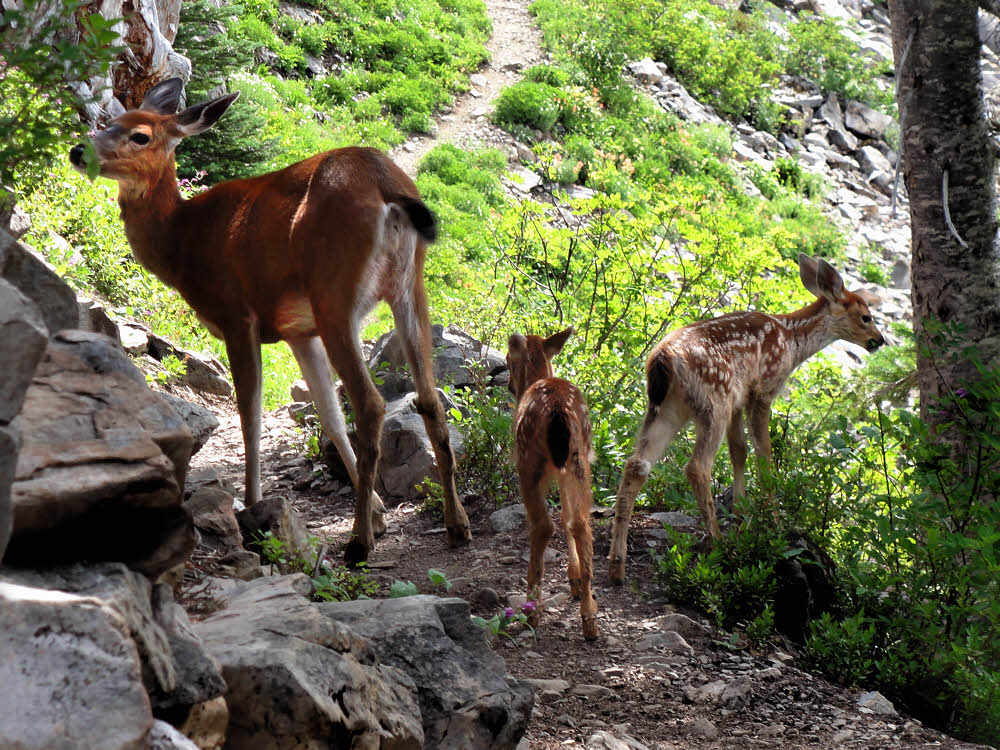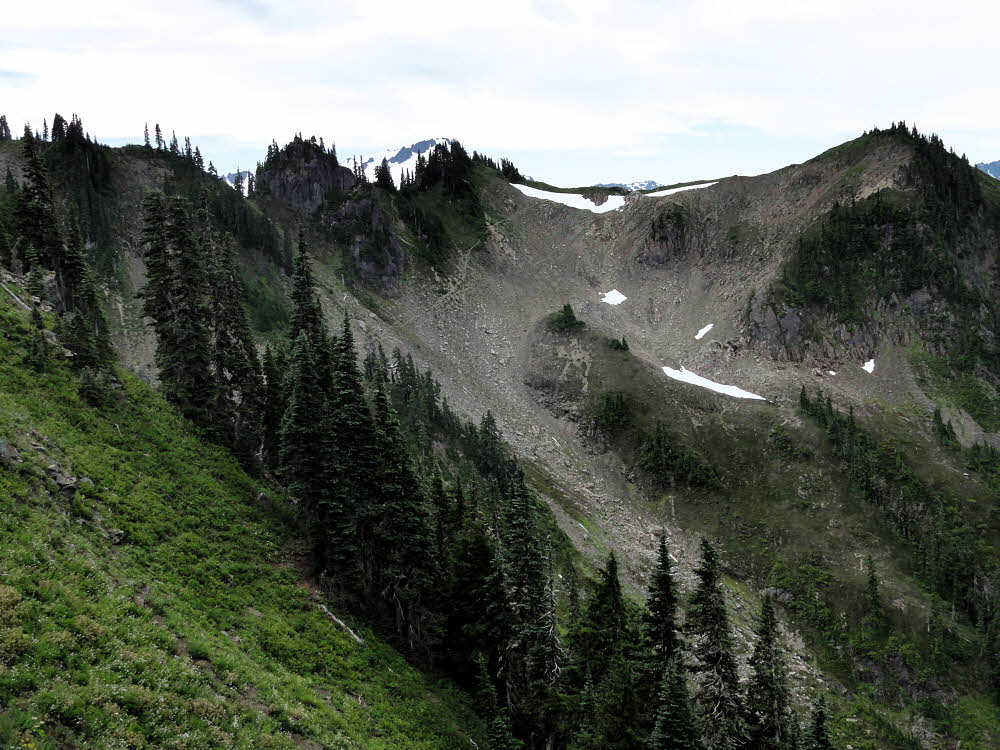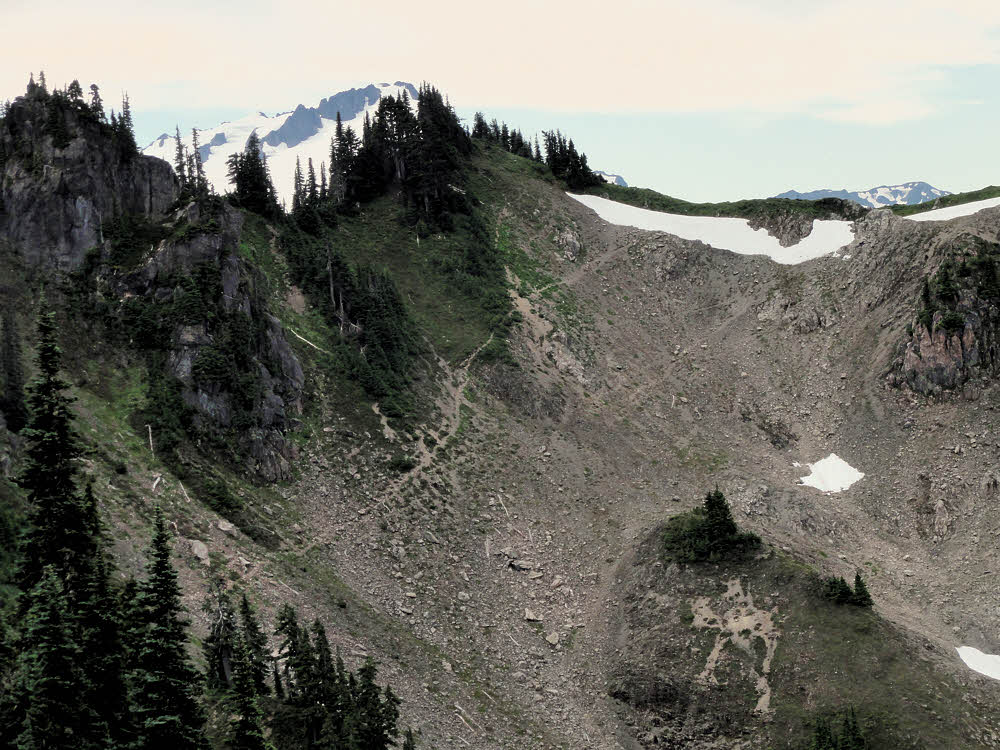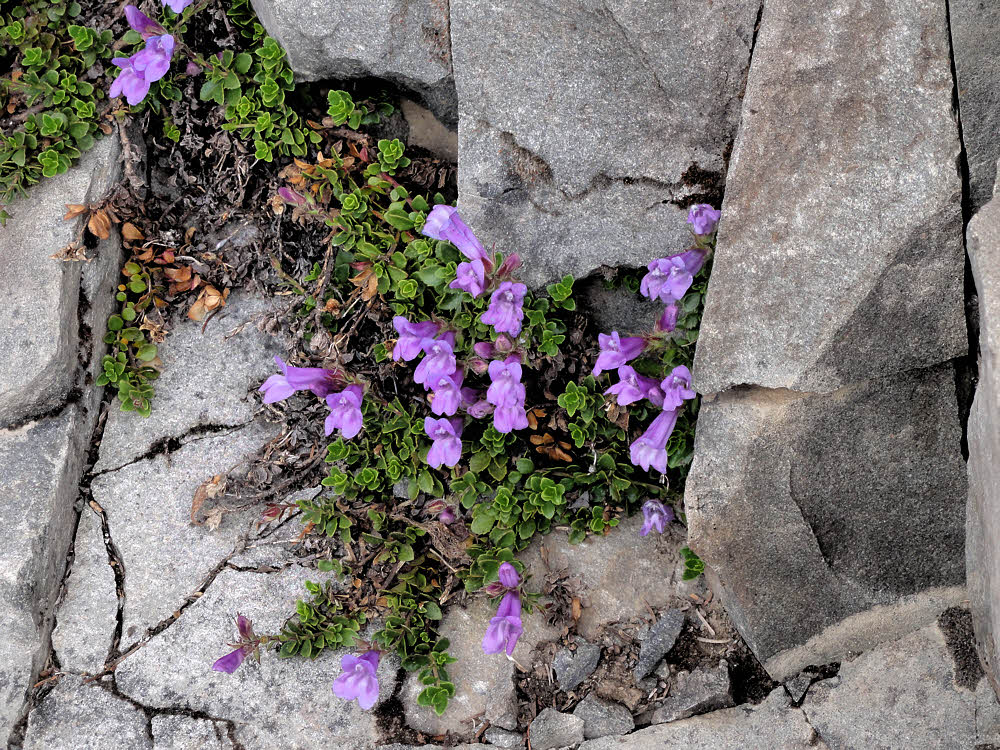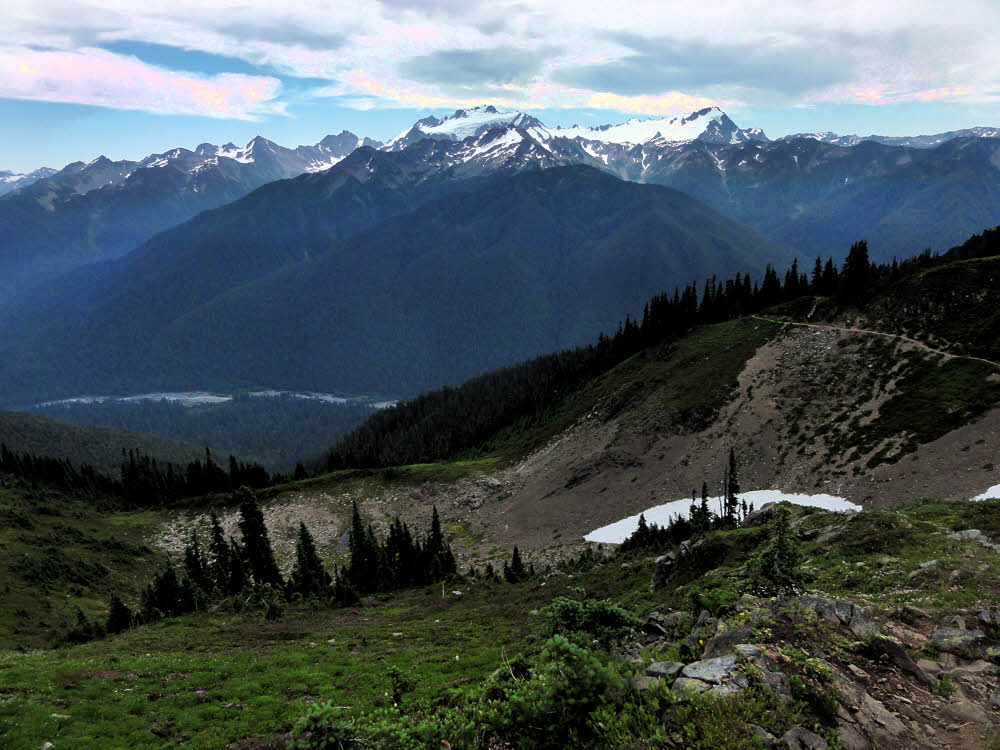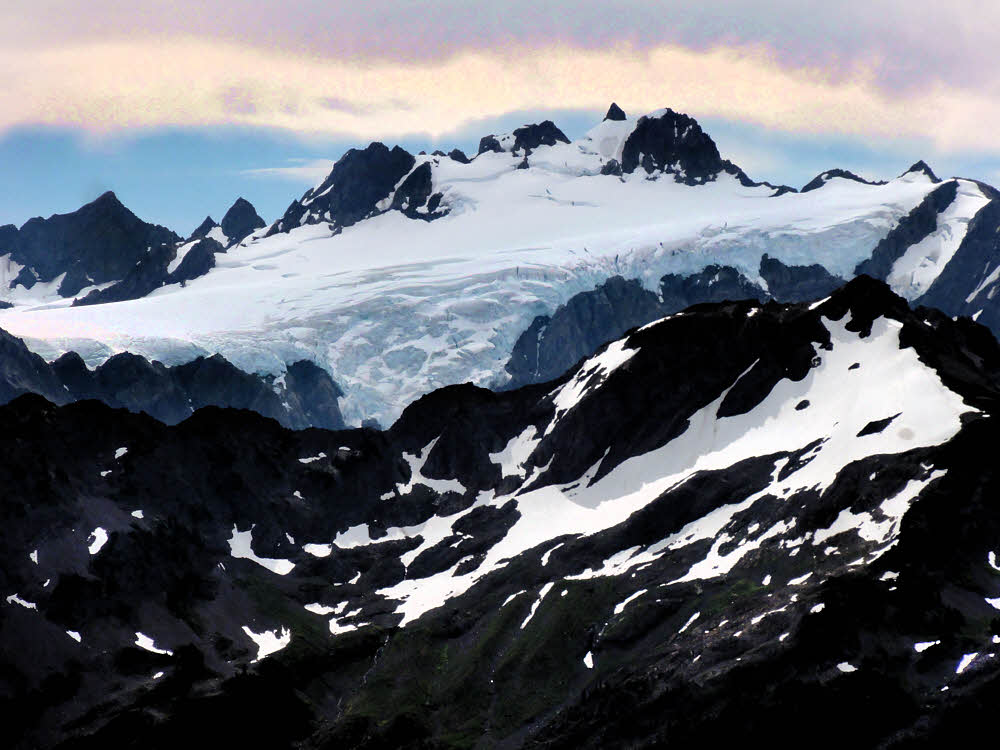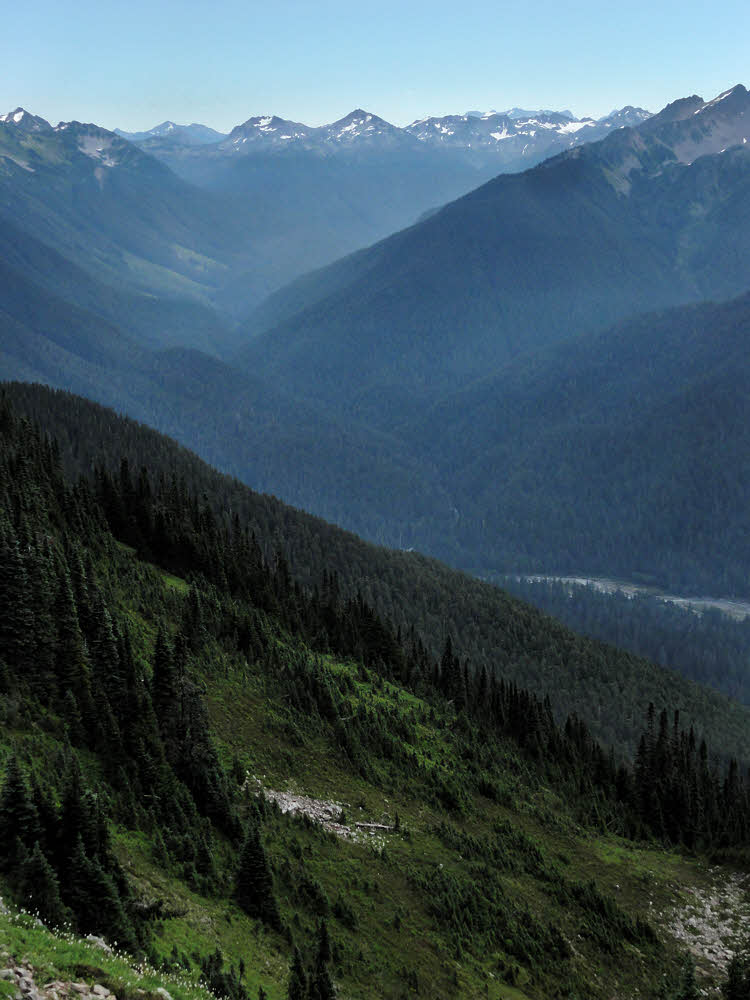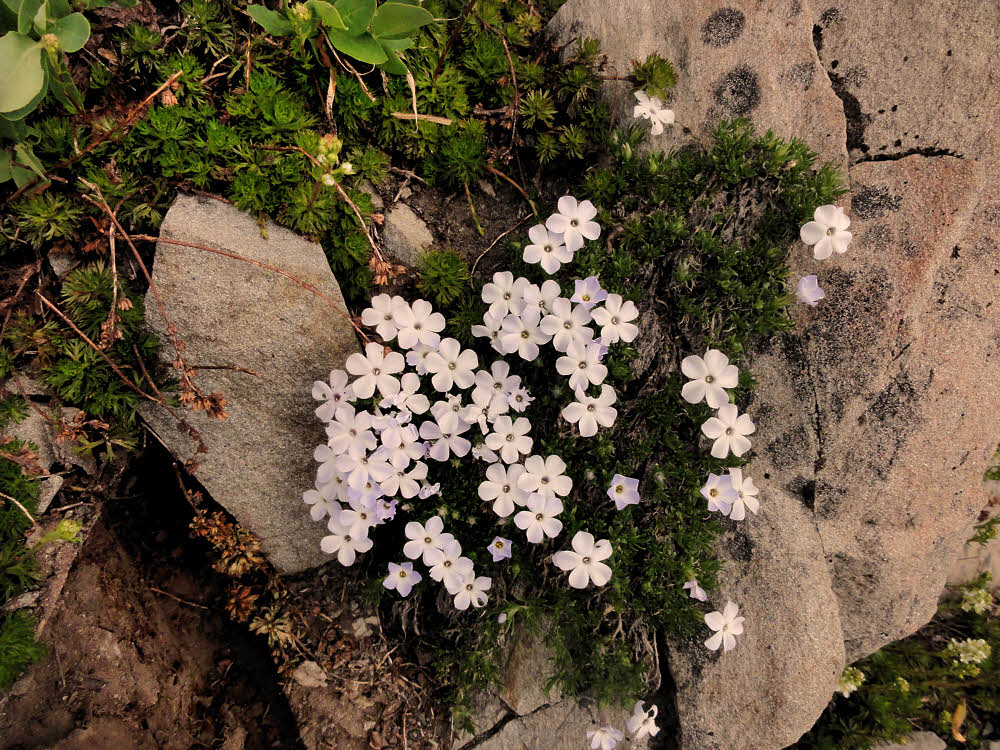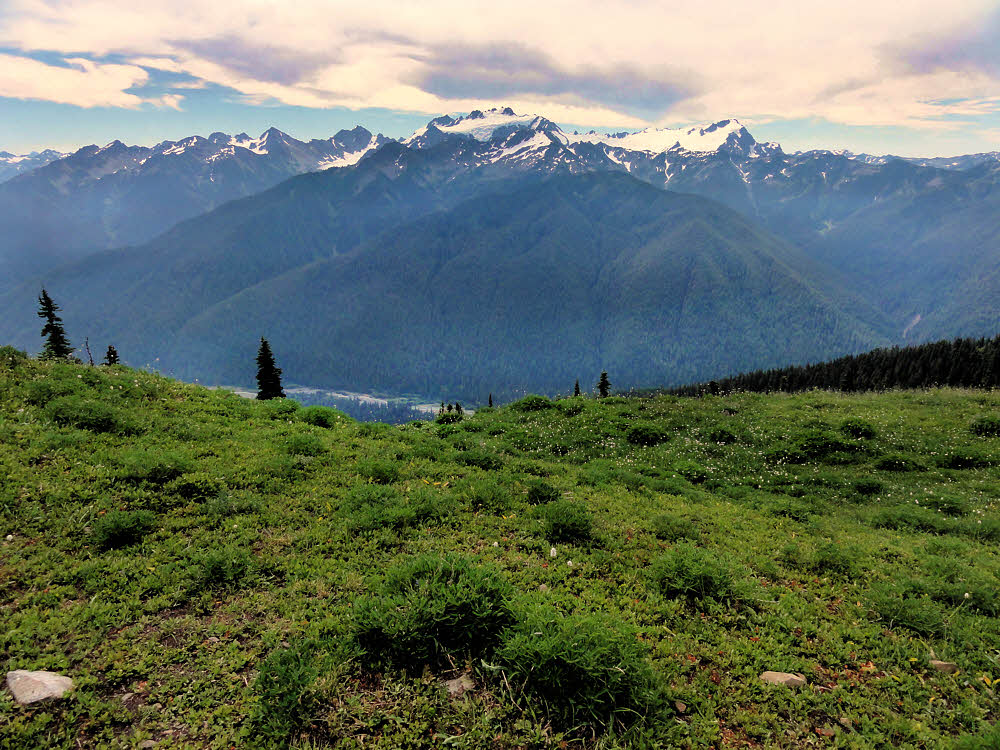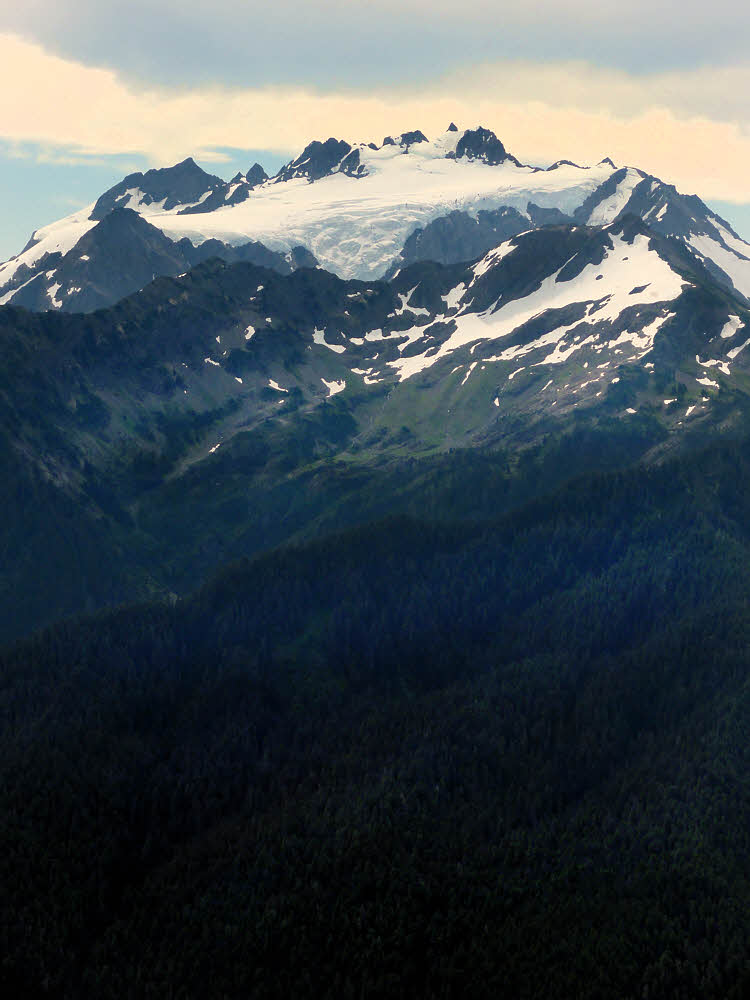Part 2 of 2: Day-hiking the Sol Duc loop.
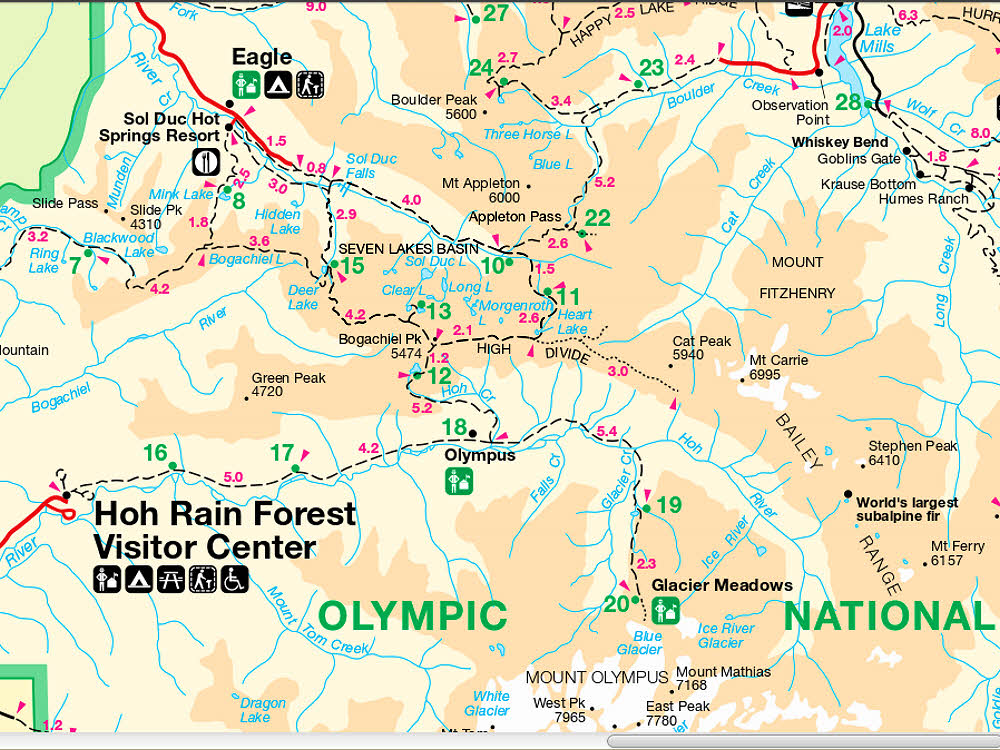
Seven Lakes Basin
Lunch can be a wonderful thing. Mostly, for me, food is fuel, but if it tastes good, so much the better, and on the trail, refueling time is resting time, made especially better if accompanied by a mug of tea.
So I had a leftover meal already packaged up from the previous week's backpacking trip, water, a teabag, and a cookset. And I was nearly halfway around the 19-mile (31 km) loop. And the clock said noonish. Good enough for me.
I sat, and cooked. I sat and ate, and after sitting and eating, I sat and chugged tea. More than good enough.
By then the day's haze had vanished and long shots into the Hoh River Valley and across it to Mt. Olympus were coming out less like fuzzy-blue blobs, and more like photographs.
It was time for more walking.

Along the High Divide.
I had estimated that in the worst case I would get back to the car by 7:30 p.m., which was on the late side of things, making this a 12-hour hike. Ordinarily, 19 miles in 12 hours is not good time, especially while traveling unloaded. It's different with a full backpack, even a light one, but the Olympics are also different.
In the Olympic Mountains, at least to my way of thinking, which matches my experience there, the going is tough. There are two kinds of tough going. Going up and going down. In other words, much changing of elevation.
Hiking in the river's direction along the Elwha, from Low Divide toward Whiskey Bend is not like that, nor is it typical of foot travel in Olympic National Park. Given the right conditioning, the right weather, the right load, and an early morning start, a person can cover almost the entire Elwha, a distance of about 25 miles (40 km).
But it's all downhill, and level. Nice. Foresty. Mossy. Quiet. But not typical of hiking in the Park.
What is typical is shorter river valleys terminated at one end or the other by mountain passes. Steep ones. Steep ones with snow patches that linger into August, or even later.
Such as the Sol Duc/High Divide/Seven Lakes Basin loop, so I had to keep moving. Going uphill is slow work, as is going downhill, given trails knotted with tree roots and cluttered with rocky outcroppings.
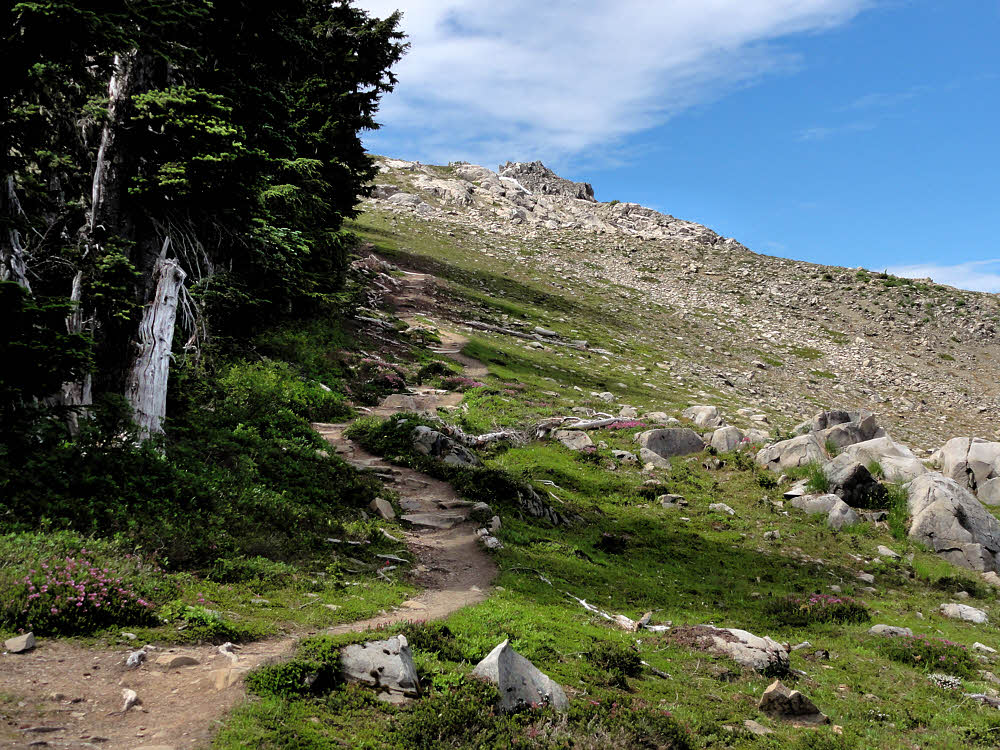
The shoulder of Bogachiel Peak.
But with calm air, sunshine, and a belly full of eats, I felt good. It was a good day.
Mt. Olympus was obliging, hanging there in the open, showing off its glaciers. And there were glimpses of the Hoh Valley, which might be nice to hike again. I've seen it only in the wet of winter, not in the warmth of summer, but then again it's an in-and-out hike and I like loops, and once you're in a valley, you don't see much — cobbles, sand, flowing water, and moss.
At least up high, where the hiking is more deliberate and at times more desperate, you see farther. I did see all the way to Mt. Baker, over by Bellingham, and pointed my camera at it, but the haze outdid both me and the camera — there is no there there, only a vague whitened horizon, even though Baker was plainly visible.
Likewise, there were fog banks lying heavily within the Strait of Juan de Fuca, which separates the Olympic Peninsula from Canada's Vancouver Island, and what appeared to be more of it out west, toward the unbounded Pacific Ocean. Impressive to the eye but photographically elusive. I passed on them — there was no use trying — all you get from attempting to photograph things like that is a washed-out band of too-bright something cutting horizontally across the image.
So I pretended that I would be content with continually snapping Mt. Olympus, its White Glacier and its Blue Glacier. Those photos worked. Well enough.

Seven Lakes Basin, looking northwest.
The trails there are good enough too. Accepting steepness, and tree roots and rocks, which are what you get in a live landscape.
Generally speaking, I can get lost anywhere, anytime, without thinking, but aside from temporarily heading up toward the top of Bogachiel Peak before I realized where the right trail was, I didn't have any trouble. Even I, which says a lot.
As mentioned earlier though, there were lots of people. Lots.

Lone backpacker at Seven Lakes Basin access trail.
I saw a bunch right before lunch, specifically a young woman and her young male companion. He was sitting, munching a snack, and she was standing, facing him. I gave a perfunctory greeting while passing by and couldn't help, once again, noticing their outfits and gear.
Both had enormous packs. They could have been the two pack animals for a party of six, but they were apparently alone. Wearing big leather boots, all decked out in Official HikerWear™, but not so much as other people I see at times.
Last September in the Goat Rocks I ended up feeling self-conscious. Everyone there was decked in full head-to-toe HikerWear. North Face shirts, Sierra Designs pants, Outdoor Research hats, Danner boots, ExOfficio gloves, Oakley sunglasses.
I didn't see much of their equipment, but I can guess. The same brands as above, plus packs (Arc'teryx, Black Diamond, Boreas, Deuter, Eureka, Exped, Granite Gear, Gregory, JanSport, Kelty, Mammut, Marmot, MHM, Mountain Hardwear, Mountainsmith, Osprey, Patagonia, REI), plus stoves (Bleuet, Coleman, Jetboil, MSR, Snow Peak), plus more of the same for the rest of their stuff.
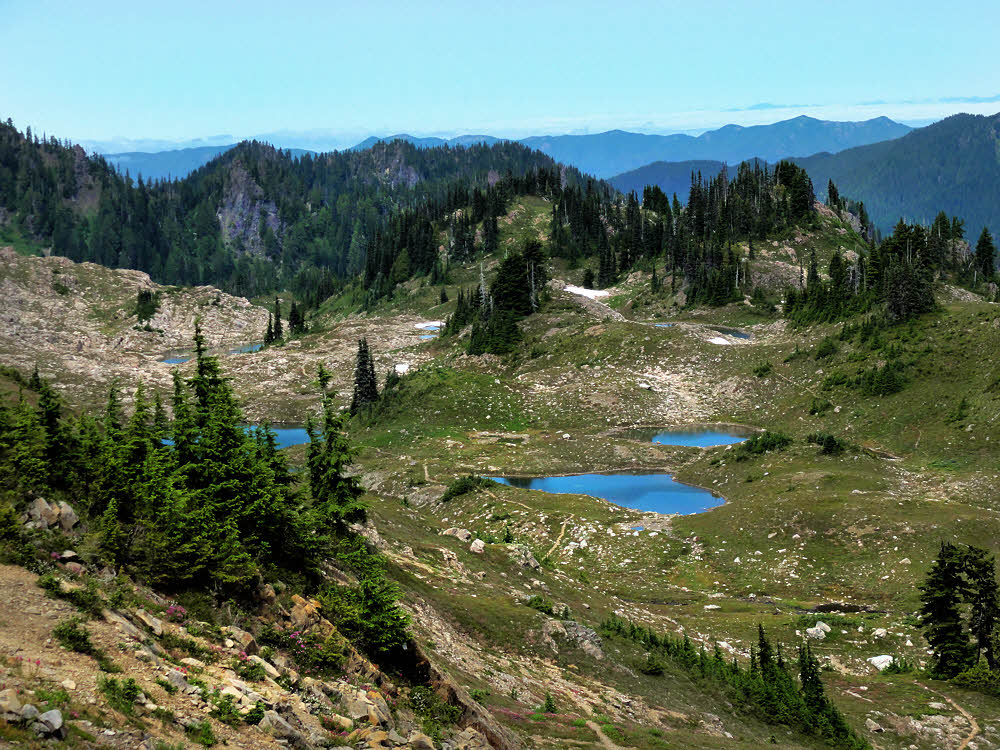
More of Seven Lakes Basin.
Me, I'm a bum. I prefer to make what I can, and make do with what I can find, and buy what else I need when I have no other choice.
My stove is small enough to stuff inside my mouth and burns alcohol. Its accessories (pot stand, windscreen, ground protector/reflector, and so on are things I made. My cup is a a delightful 650 ml aluminum job made by Imusa out of Colombia. I was lucky enough to find it in Cuenca, Ecuador, and bought two, plus a full liter-sized larger sibling. Each of them cost around $2.
Some of my clothing I've made myself, and I used to have a pack that I designed and made, though I had to chuck it out when I moved to Ecuador. Which didn't work for me in the long run, so now I'm hoping to get settled enough again to sew up some goods, such as a new pack.
Things like that. I look and act like a bum. I'm out of place even in the woods. Maybe I'd fit in with thru-hikers, but doubt that I'll ever be one.
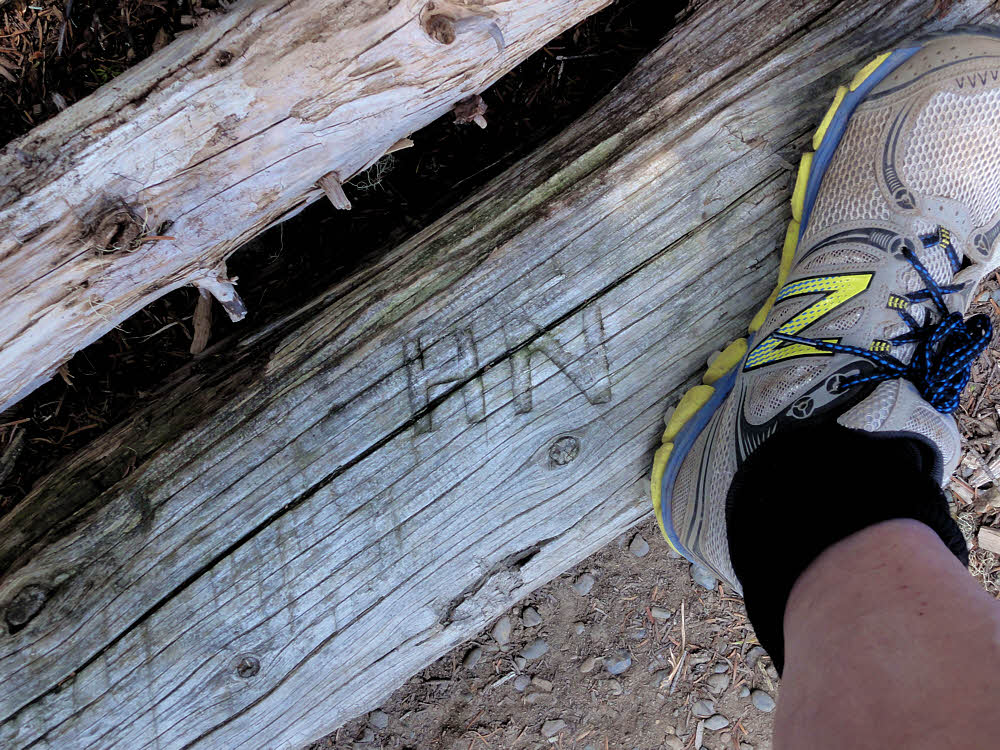
Apparently where Hiker News is usually posted, but there was none.
By and large though, people give you a pass. Not many people you meet on a busy trail want to share notes. They're mostly urbanites out for a day or two. You can tell.
People like that don't tend to be friendly. They're used to passing thousands of others like themselves on city streets, which is exactly the kind of place that you don't make eye contact or share pleasantries.
True people of the trail are different. They may not be yearning to make lifelong friends from the random assortment of those they meet, but they don't judge so much, or ignore so much. They're there, you're there, that's it.
Fellow travelers well met. No thousand-yard stare. No wordless passing. No smell of cologne or strawberry-scented body wash. Whatever that really is.

Mt. Olympus again, somewhat more clearly seen.
As I've sort of said earlier, this is a great area to pass through though I'd prefer not to camp there because of the heavy use that the area gets.
Surprisingly, I didn't see any tents, except a couple in the lower areas, on the way in and on the way out.
The foot traffic was almost like a shift change, everyone tromping this way and that, in long lines, although I didn't see any large parties leaving. Maybe because it was a Tuesday.
Maybe the weekenders had gone out Sunday evening, or Monday morning, and now the area was refilling. Can't say.
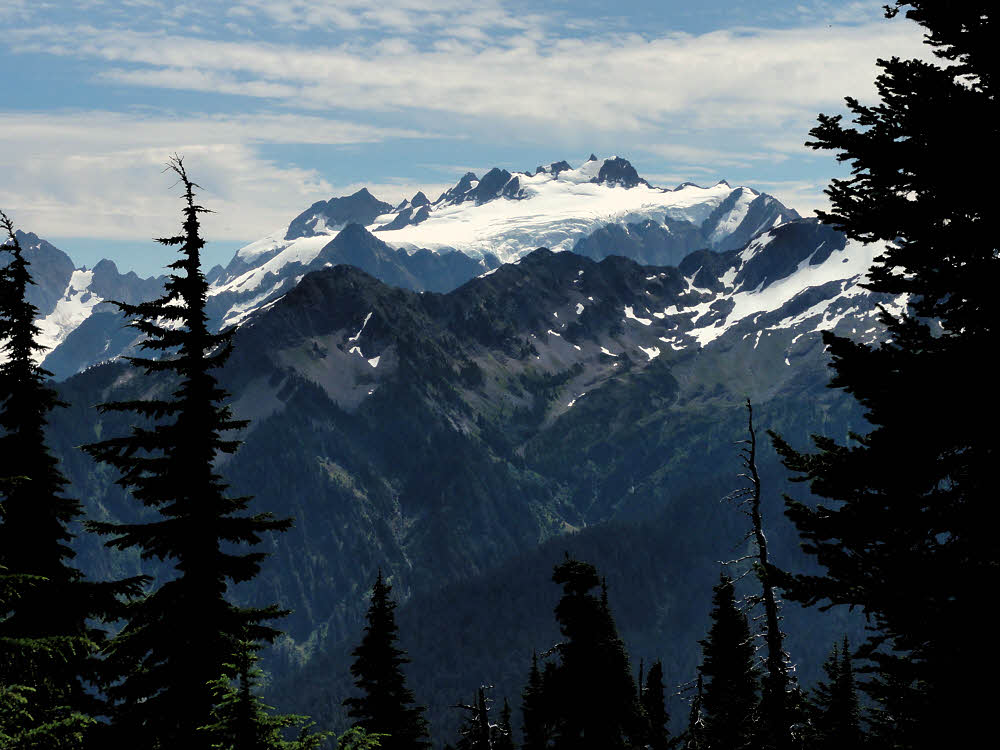
And White Glacier.
I did notice (and last year too) that there is almost no backcountry ranger presence.
Several of the other trails I passed over this year are the ones I saw last year, and last year most trails were choked by blowdowns. Some stretches of trail were nearly impassible because of the constant trunk-hopping needed. While not too difficult in itself for a person carrying a light pack, it is tedious, and dangerous in its own way.
But those choked trails of last year are clear trails this year, so crews have been out.
Not so with rangers.
Olympic National Park's backcountry is dotted with seasonal ranger warrens. They are all abandoned. Some are cabins but most are wooden tent platforms. All vacant.
Last year I did see a couple of volunteers — people wearing a semi-uniform with some kind of patch on the sleeves, but definitely not real rangers. The Park Service must be hurting.
It used to be that you could bet on seeing a ranger or two every other day. Not now. The money doesn't seem to be there any more.

Lunch-spot trail, left, High Divide main trail, right.
So, I guess if I have to choose, I'll go with trail crews keeping the paths clear, and accept the lack of rangers as a sort of blessing.
Backcountry rangers are a nuisance for me more than anything else. I mind my own business, stay out of trouble, clean up after myself, and don't need lectures on how to hike or where to camp.
Most rangers are paper-pushers, even the ones who hike, and are mostly interested in whether every backpacker they meet is properly registered. It's easier to tell who is missing if you know who went in and didn't come out on time.
At times though, you do get into discussions about where you'll camp and when, and what kind of equipment you have, and the bureaucratic mind is a terrible thing to be examined by.
You can't reason with it.

Bear grass.
For example, try explaining that you don't wear boots. That won't fly.
Everyone knows that you have to have boots if you go hiking, let alone backpacking. To a ranger's mind, if you're wearing anything other than heavy leather boots with lug soles, you'll be the inevitable target of a search party and the eventual recipient of a helicopter evacuation, dead or alive. End of discussion.
Or say you're trying to explain why you don't really need to be in or expect to be at a particular campsite. Because you use a backpacking hammock.
No. Can't get the idea across. Rangers, like most backpackers, when they think sleeping, think tent. On the ground. And if it's on the ground, it has to be in a place that's already been trampled to death, otherwise it's destroying a new area that hasn't already been trampled to death, but will be when you get done with it, which is what they don't want, because that means even more work back at the office.
No. That discussion doesn't work either, so you go along with it. Say you'll be at Location X on Day Y, and then melt into the forest and hang yourself. Comfortably. In your hammock. And don't bother talking about it.

Ditto, from above.
So the rangers are not out there any more. For now.
So you only have to get a backcountry permit if you're staying overnight, and deal with the office people, and don't have to worry so much about random trailside inspections and challenges from uniformed officials inspecting the legality of your status.
Now it's more like you and the backcountry — work it out on your own.

Another small lake, Sol Duc River Valley in background.
Which works for me.
Except for all the people out there.
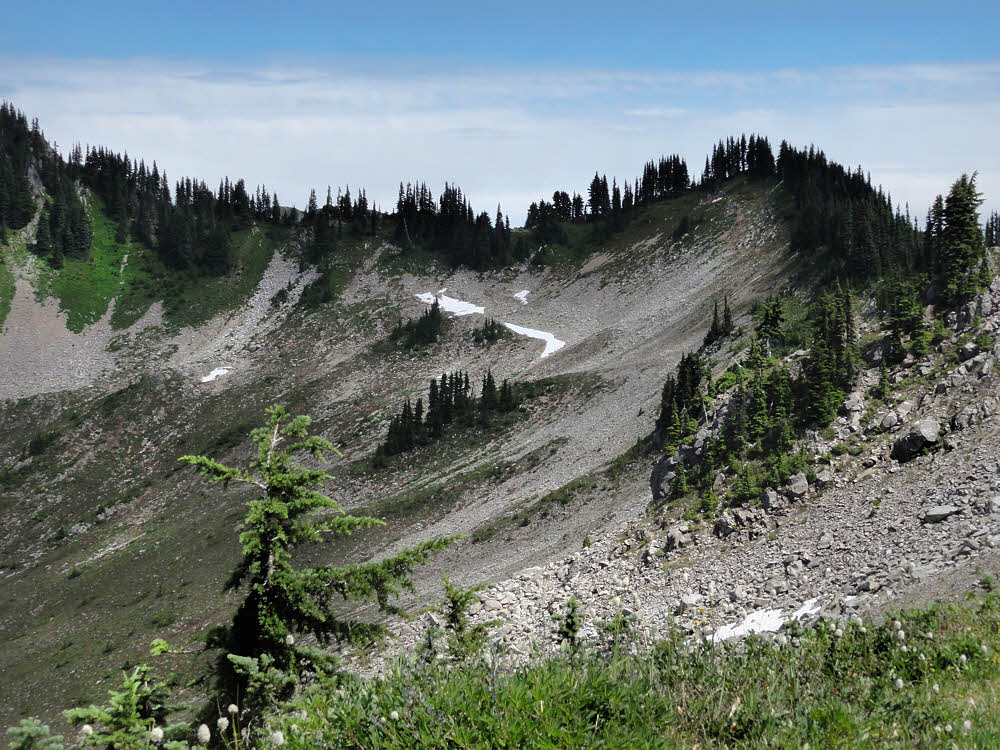
The last ridge of Seven Lakes Basin.
But as noted, they're mostly city people and don't see you, especially if you look a little off.
Not dressed in new brand-name togs. Not carrying a pack the size of a compact car. Not pounding the ground with your kilogram boots.

Mt. Appleton, I'm thinking, to the north, more or less.
You get to drift along anonymously and as an oddity you're given a wide berth.
Especially so if you're doing a day hike. And this is a decent place for one.
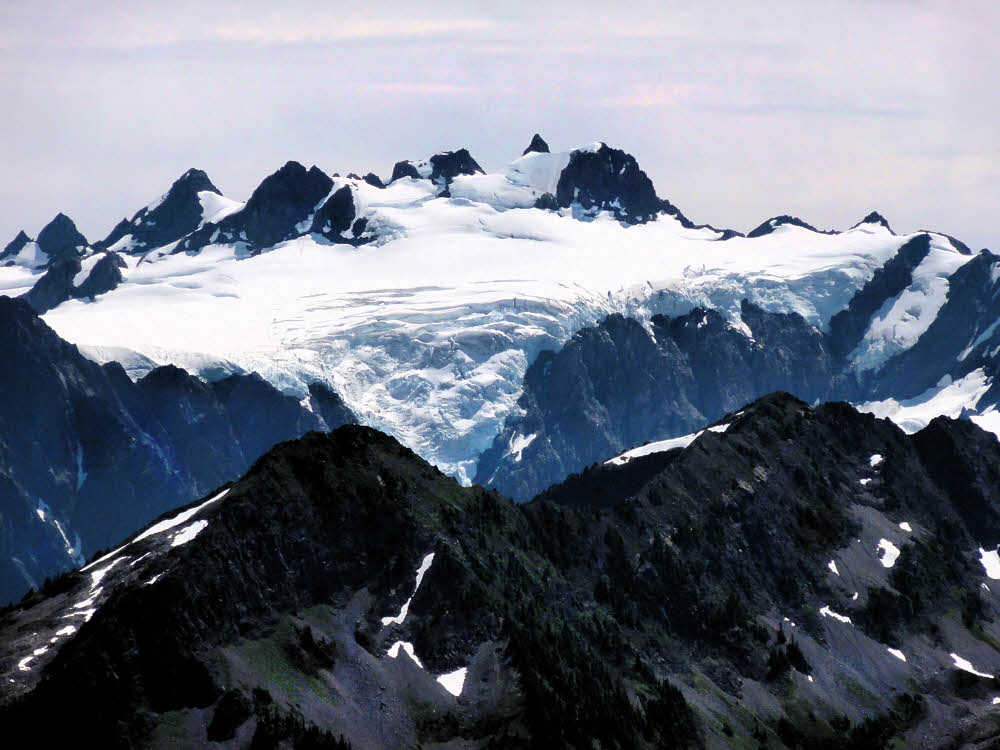
White Glacier again. Getting more impressive by the minute./p>
And, getting back to what might pass as a topic, this is what I had intended to do — hike a loop, grab some photos, see a new place, and retreat.
After lunch it was mostly downhill.
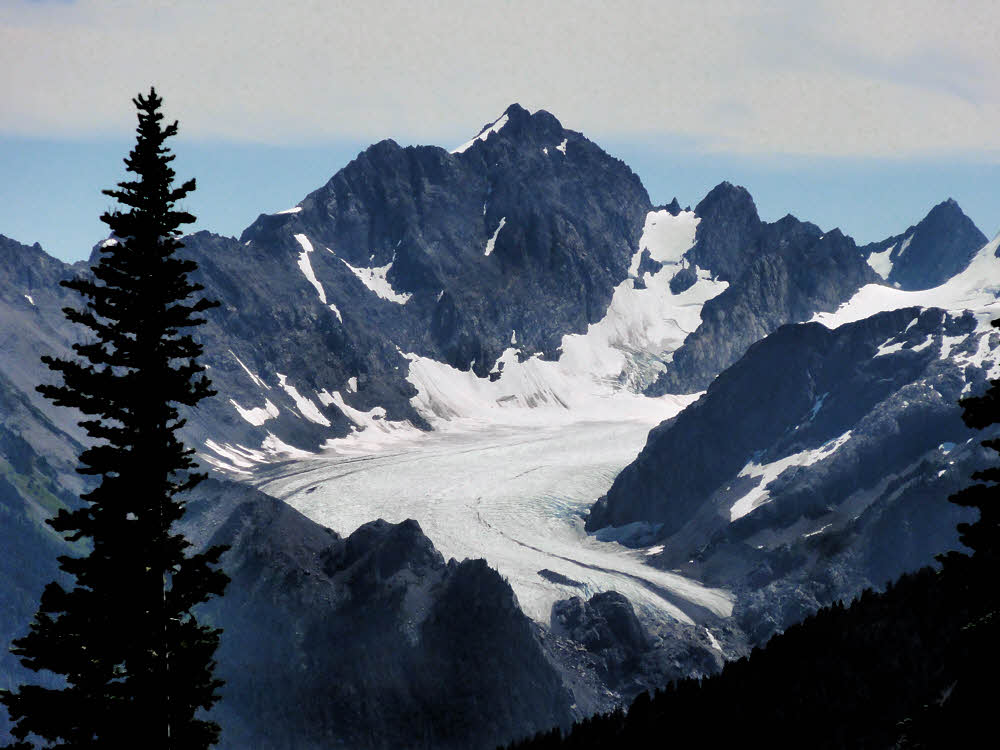
Blue Glacier, on the northeast side of Mt. Olympus.
First, I passed the tail end of Seven Lakes Basin, which is sort of a wash.
A nice place to see but not particularly hospitable. Open and mildly rocky, with plenty of small lakes and few trees.
Then, a lot farther along, and down, there was Heart Lake. At this point I'd assumed that I had passed it, but it was unmistakable.
They could call it Cardioid Lake, which it was, geometrically-speaking. Pretty much a wet Valentine up there, boggy at one end and draining wetly from the other. Also well-trampled. No doubt it sees use.
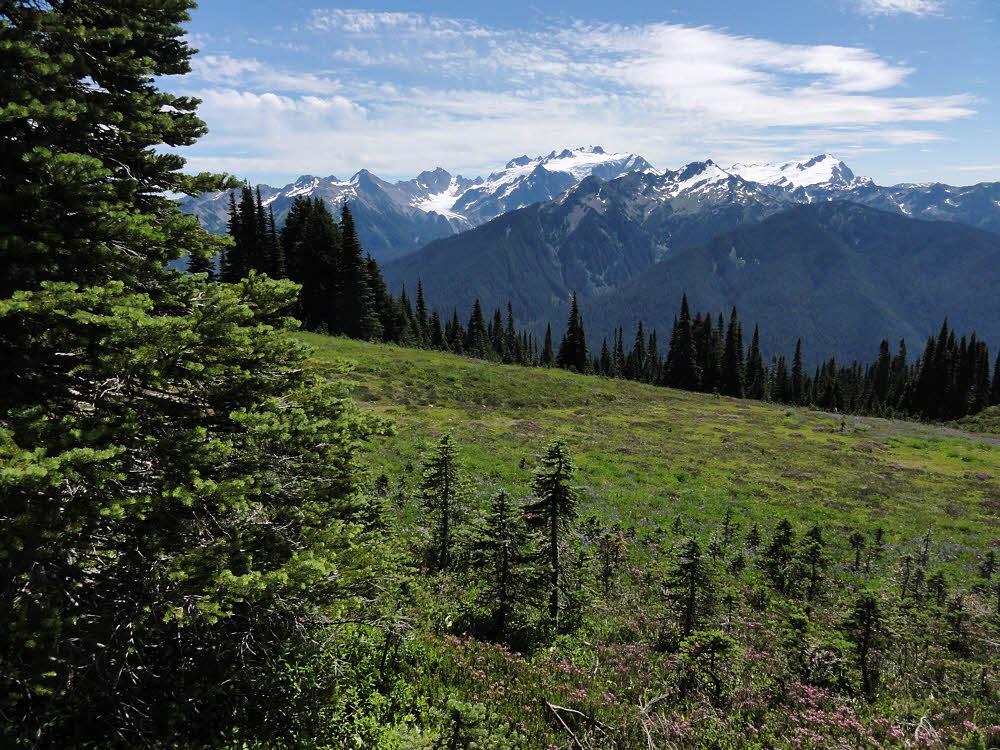
And all of Mt. Olympus at once.
From there on down, the trail was less interesting, but still long.
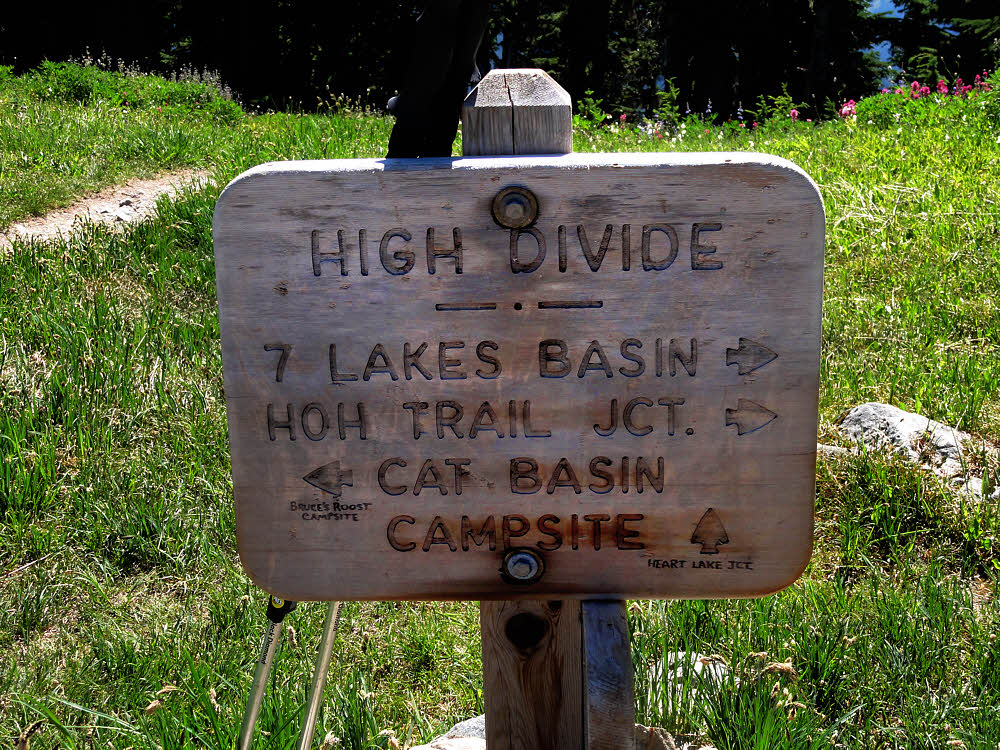
At least the signs were in good shape.
There is a spur up to Cat Basin, but I'd declare it uninteresting on priciple.
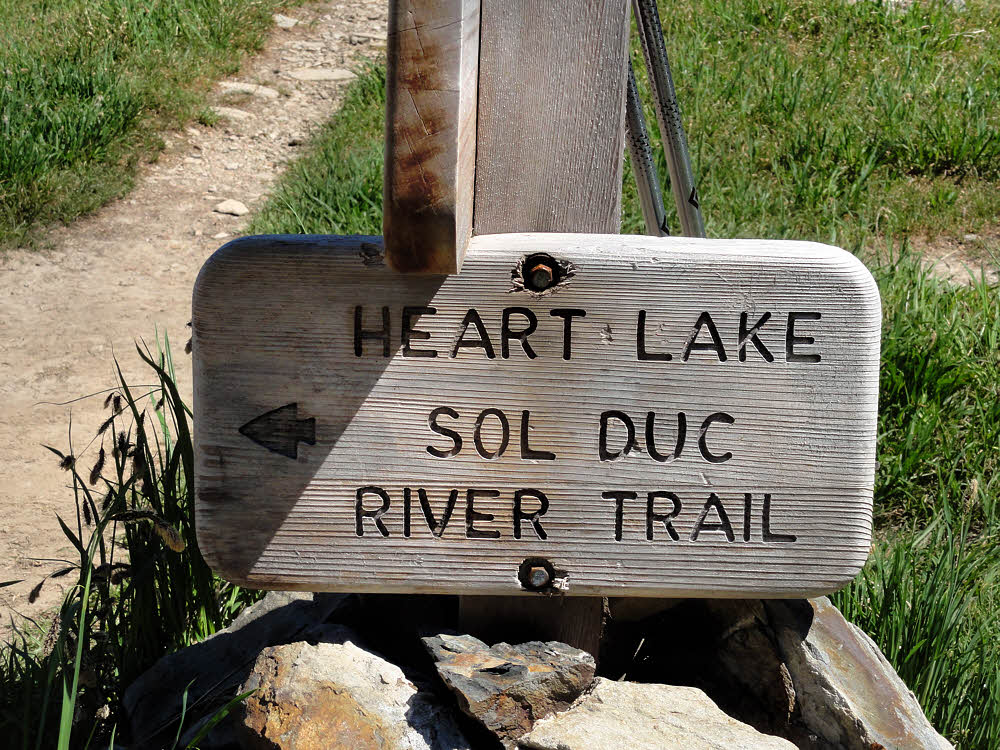
No doubt if the shape wasn't enough. We're at Heart Lake, guys.
Why hike another three miles to go there and look up at Cat Peak? After hiking all this way in?
Not for me.

Sol Duc and Heart Lake, left. Cat Peak straight. Camping to your right.
But if you like forest hiking, and want to go downhill, then the rest of this hike is pretty good.
There is water here and there, and lots of flies, and enough shade to diminish fears of sunburn.
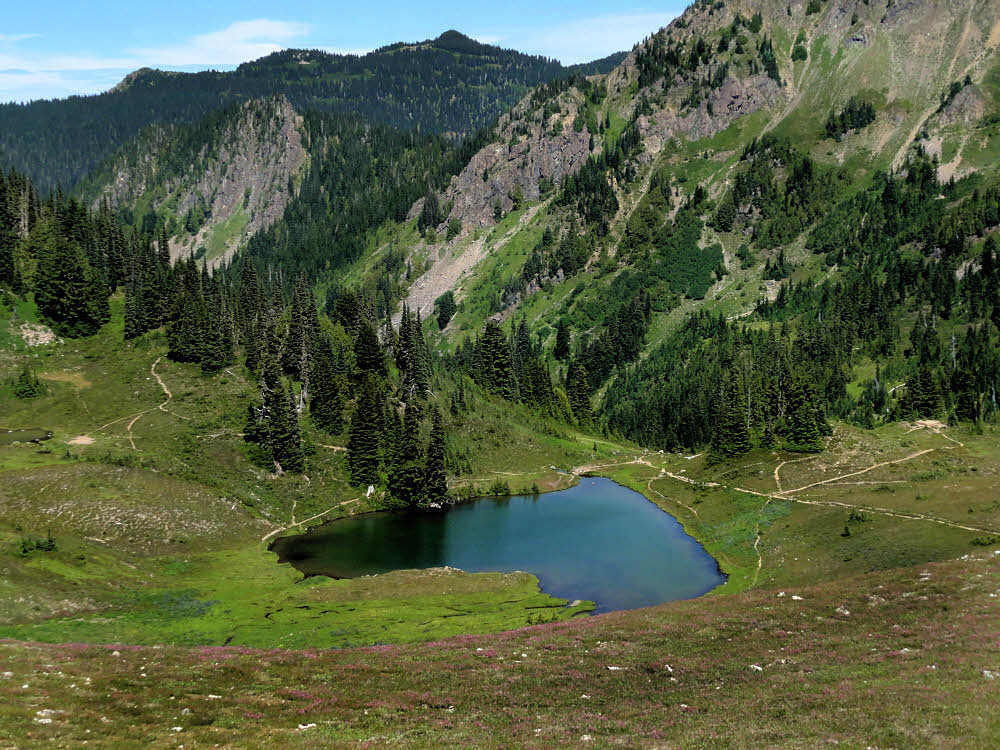
And this is, as you might expect, Heart Lake.
Though it does get to feel endless after a while.
On the whole, I prefer a long river-side walk like descending the Elwha to a forest-bound, random downhill. Going along a river at least gives a person the feeling of getting somewhere. While it's true that I was headed for the end of my loop, the parking lot, and my ride back home, it was more like something to be endured than the end of a nice hike.

Heavy-duty stompers headed uphill.
There were still more people hiking in. I passed one particularly large party of mostly children. Everyone was dressed in flimsy shorts and more cotton T-shirts. They were all milling around at a shady spot, all right in the middle of the trail.
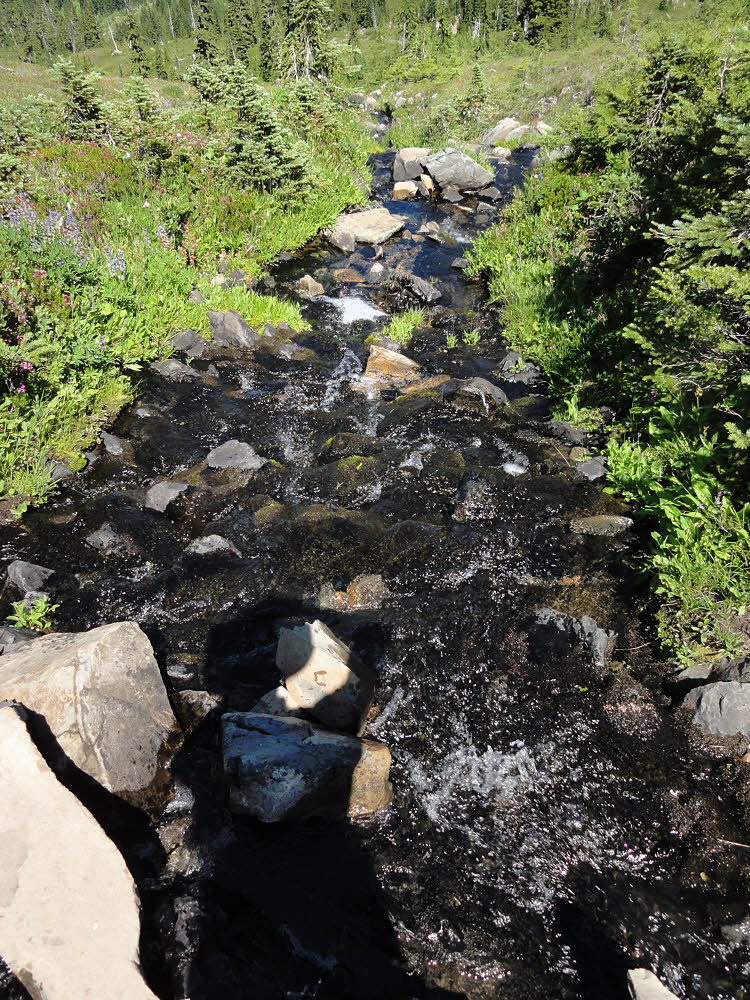
Outflow from Heart Lake. Cool and clear, with black "moss".
One guy said Excuse me for blocking the trail as I passed, but didn't move. I still don't understand that one.
I don't remember seeing any packs either. Maybe it was a one-way mass suicide party rather than a backpacking trip.

Another snow-bent tree.
The side trail to Appleton Pass came and went.
There was dust.
There were rocks.
Flies attacked every time I slowed for a photo.
The usual.
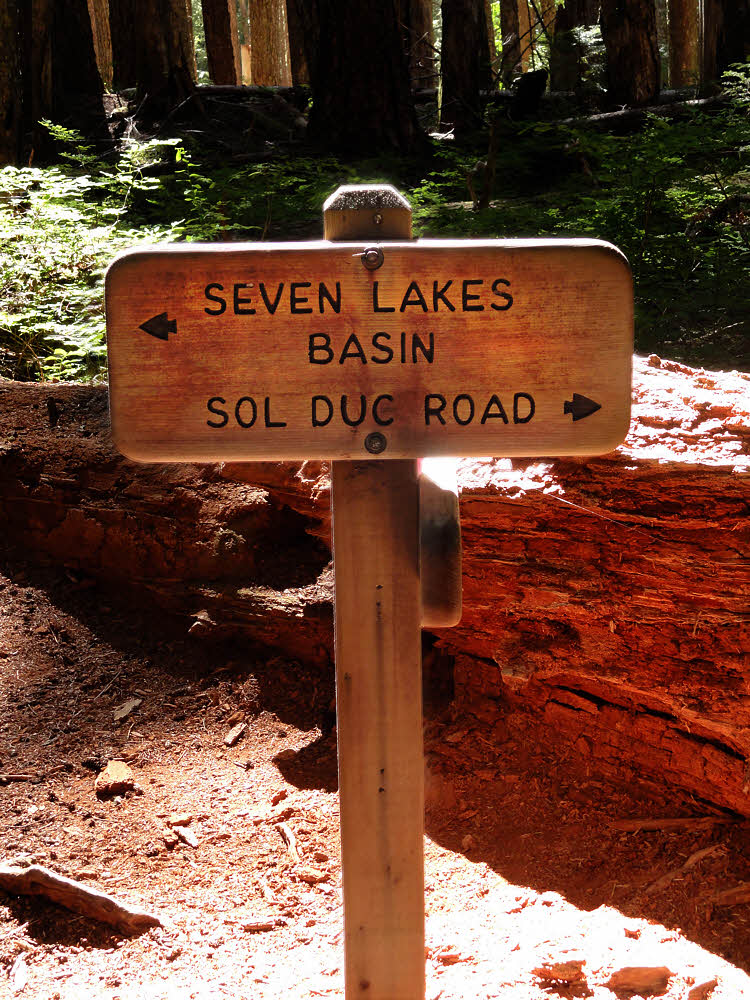
At the Appleton Pass trail junction. Not much else to see this far down.
And then it was over.
I had a snack in the parking lot, drank some water, changed shoes, and drove home.
The end.
More:
Elwha River Restoration story.
Elwha River Restoration photos.

